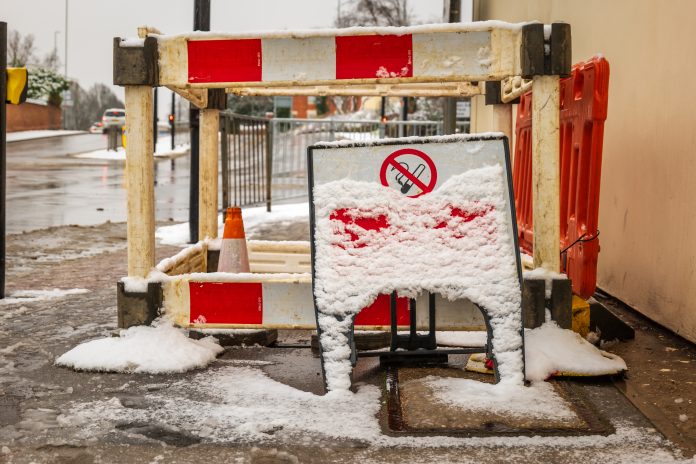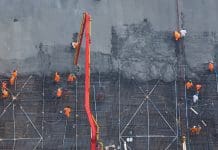The latest December construction output has shown that growth remained flat due to an increase in new work offset by a decrease in repair and maintenance
Evidence suggests that colder temperatures at the beginning of the month extended regular Christmas shut-downs by longer than expected for many businesses. Furthermore, businesses have also continued to reference economic concerns affecting customers’ likelihood to request construction work and, consequently the December construction output.
ONS estimates that construction output increased by 0.3% in Q4 2022 compared with Q3 2022, which came from growth in both new work (0.4%) and repair and maintenance (0.1%).
Annual construction output increased by 5.6% in 2022 compared with 2021, which follows a record increase of 12.8%. The annual increase in 2022 was because of rises in both new work, and repair and maintenance, which rose 3.8% and 8.5%, respectively.
Excluding 2021, this is the strongest annual growth for repair and maintenance since records began.
Non-housing repair and maintenance and infrastructure and new work saw the largest increase in December
The main positive contributors to the December construction output were non-housing repair and maintenance and infrastructure and new work, which increased by 5.4% and 3.7%.
The main negative contributors in December were seen in private housing repair and maintenance and private new housing, falling by 8.5% and 2.3%, respectively. Evidence has suggested that there was a general slow down in housing work in the latter part of 2022, however numbers still remain above their pre-pandemic levels.
New orders decreased 1.8% in Q4 2022
ONS figures estimate that the total construction new orders decreased 1.8% in Q4 2022 compared with Q3 2022, which came mainly from private commercial new orders and infrastructure, which fell 9.6% and 11.8%, respectively.
The annual rate of construction output price growth was 9.7% in the 12 months to December 2022, which has slowed slightly from the record annual price growth in May 2022.
Five out of nine construction sectors saw an increase in annual growth in 2022
Contrasting monthly movements, private new housing and private housing repair and maintenence were the largest positive contributors.
Record annual growth was also seen in private industrial new work. Of the negative contributors to annual growth, public other new work, saw its sixth consecutive annual fall, and private commercial saw its fifth consecutive annual fall.
Construction output price indices in December 2022
Prices in the construction industry increased to 9.7% in the 12-month period to December 2022.
Although the rate of annual price growth has slowed slightly from the record increase seen in May 2022 (10.5%), prices still remain above historic price levels.
The impact of high interest rates has impacted new housing
Fraser Johns, finance director at Beard Construction, commented: “As predicted and many firms prepared for, construction output continued to flatten into December as ongoing impacts from high interest rates and diminished confidence impacted new housing.
“But once again, the data shows a tale of two halves. The slowdown in housing work in both private new housing and private housing repair and maintenance was offset by an increase in new work across key sectors.
“Any appetite for new commercial work will certainly make for encouraging news, especially as energy costs continue to stabilise and material costs for once stay within expectations. While the cost to borrow still remains higher than many have become accustomed to, we’re starting to see positive indicators that inflationary pressures are beginning to ease.
“Those firms that can demonstrate their skillset in delivering smaller, specialised projects in key sectors such as education, healthcare and both local and central government will be well placed in the coming 12 months. Constructions firms need to stay close to all stakeholders, continue to adapt, and remain lean and flexible in the months ahead.”
Fall in private new housing reflects wider economic uncertainty
Mark Leeson, operations director, McBains, said: “After the flat growth witnessed in November, today’s figures prove that the construction industry is still swimming against the tide in many work areas.
“The cold weather in December undoubtedly had an impact, but while the continued increase in infrastructure work is welcome, more worrying is the fall in private new housing work, reflecting the wider economic uncertainty. This trend is likely to get worse, with major volume housebuilders all warning this week they would be building fewer homes as customers put off major purchase decisions amid the cost-of-living crisis.
“Meanwhile, despite more recent upbeat forecasts of the extent of the UK recession, construction would benefit from an injection of confidence. We are hoping that the Chancellor, in his Budget next month, provides incentives to boost housebuilding and also to encourage the greening of buildings to stimulate the industry’s recovery and help making inroads towards the net zero target.”
The industry needs to work together to ensure 2023 isn’t a year of declining output
Mark Robinson, group chief executive at SCAPE, added: “Flat growth in December is a more positive note to end what was a challenging second half to 2022. Despite this, uncertainty remains the dominant feeling among contractors attempting to plan for the year ahead, with few forecasts agreeing on the scale of the recession.
“While many look to the public sector to shape the pipeline of new work for further confidence, recent reports that Department for Levelling Up, Housing and Communities’ capital spending powers have been paused will concern firms that are keen to support local authorities’ regeneration plans. Developers and contractors should work collaboratively to assess timelines for delivery and identify alternative funding routes if necessary to ensure 2023 isn’t a year of declining output.”














